




In the clichéd school of thought of yesteryear, innovation was the preserve of the largest companies, those which had the luxury of enough people and time to allow a group to sit around in white coats in shiny labs and come up with great and grand ideas, which they would then sell to us as “new and improved.”
That’s still half true today. Take Bosch, for example, whose Budapest Innovation Campus is, as the name implies, dedicated to just that. The company says it has more than 18,300 associates in Hungary; worldwide, it employs 429,000, of whom 90,000 are in R&D, including 48,000 software engineers.
But innovation is not just for the big boys. Increasingly, SMEs are jumping on the bandwagon. Indeed, there is a an arguement that says they have to.
In the week we were putting this publication to bed, Minister of Culture and Innovation Balázs Hankó announced that the number of employees working in R&D at companies in Hungary has grown from 3,000 per million residents to around 6,500 within the last decade. He wants to see that ratio increase to 9,000 per million citizens by 2030.
Hankó isn’t only thinking of Hungary, mark you. He has also said that Europe needs a “seachange” in competitiveness, as it lags in innovation and science.
He has touted the Hungarian model, which involves an innovation ecosystem connecting universities, research centers and businesses, along with tax incentives for R&D, as an example the EU could follow.
Opening Hungarian Innovation Week on Sep. 23, 2024, Hankó noted that Europe’s productivity today is 80% of the level in the United States, down from 95% in 1995. He lamented that the EU’s scientific output had fallen 8% in recent decades and now lags behind China and the United States. Europe needs “a giant competitiveness turnaround urgently,” he argued.
Part of the answer to the question must be money, of course. Hungary has just launched a HUF 181 billion European Union-funded program to support innovation in SMEs. More than HUF 106 bln of the program funding will go toward investments to boost the exports of local SMEs, with another HUF 75 bln earmarked to bolster innovation at microand small businesses.
Meanwhile, Hungary’s National Capital Holding (NTH) has launched a EUR 40 million fund to promote environmental and social standards at startups. The 10-year fund, a joint initiative of NTH and the Ministry of National Economy, is being launched in cooperation with the European Investment Fund and will target
innovative startups in the healthcare, education, green energy, and recycling sectors in Hungary and the region.
There are, naturally, plenty of innovative Hungarian examples already out there. Software developer Zengo is working with the University of Szeged to develop a virtual and augmented reality training platform supported by AI. The partners have been awarded HUF 457 million from the National Research, Development and Innovation Office (NKFIH) for the HUF 667 mln, two-year project.
Geopolar, meanwhile, has just developed a prototype reusable water purification cartridge with HUF 198 million in funding from the NKFIH.
“Together with young Hungarians, innovators and researchers, we have set the goal to become one of the 10 best innovators in Europe,” Hankó has declared. “Hungary must show that the Hungarian mind and creativity are world-class.”
It always has been. László Bíró, the inventor of the ballpoint pen (first introduced to the world at the Budapest International Fair in 1931 and first patented in 1938), and Ernő Rubik, the man behind the three-dimensional puzzle cube that bears his name, and which celebrates its 50th anniversary this year, were both born in Hungary.
Here’s to them and the innovative inspiration on offer on these pages.
Robin Marshall Editor-in-chief Budapest Business Journal

.
In a significant step towards expanding its footprint in the Middle East, Hungarian fintech company Festipay has entered into a strategic alliance with Gulf Strategic Solutions (GSS). The partnership aims to provide integrated cashless payment solutions for major events across the region, solidifying Festipay’s role as a leading provider of digital payment technology in global markets.
There used to be a time when the word “computer” meant an occupation, not a device. Even after digital technology took over complex calculations, humans remained deeply involved in analyzing and synthesizing information. However, modern scientific research produces data at a staggering rate. Significant international projects, such as research at the Large Hadron Collider or EMBLEBI’s File Replication Archive, handle data on the Petabyte scale annually, inching closer to the Exabyte threshold with each passing year
By BBJ Staff
Storing and making sense of this much information is a monumental task, calling for computerization at ever higher levels. Not too long ago, mainframe-type supercomputers were indisputably the rock
stars of high-performance computing. The tech world closely followed each new (and named) contender and its edge over the competition.
Such systems still offer unrivaled processing power, essential in handling bulk data or high-volume
input, like bank transactions. However, powerful as they are, supercomputers cannot effectively serve the entire research ecosystem. Efficient scientific research, particularly in fields such as medical research, is made possible by a dedicated, robust, accessible and advanced information infrastructure.
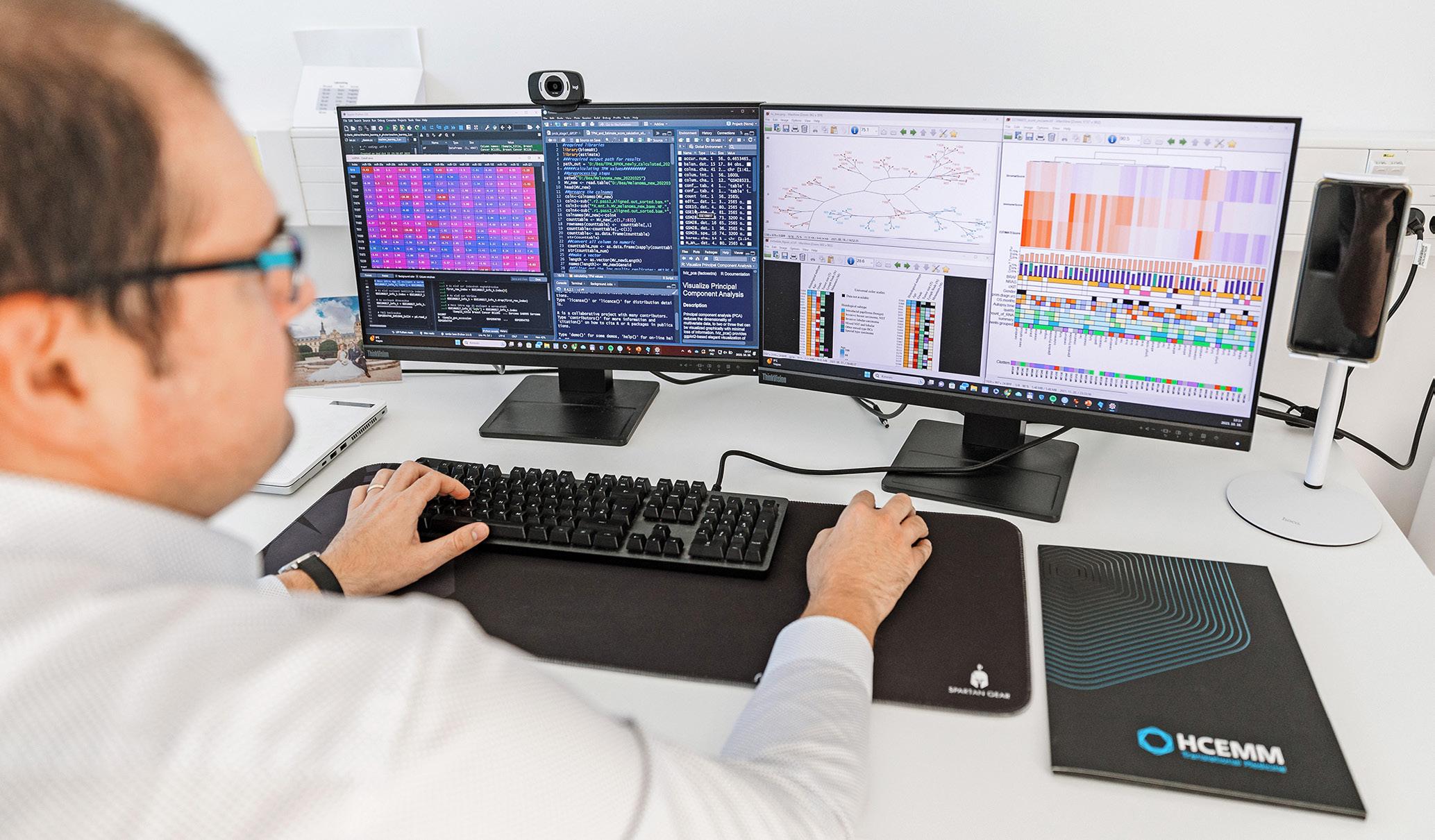
Big pharma firm MSD is deeply involved in collaboration and innovation in healthcare research and education in Hungary. Underlying that is the importance of partnerships with medical universities, healthcare providers, patient advocacy groups, and even other pharmaceutical companies, and, among other things, on the potential of data analytics and AI in healthcare.
By Robin Marshall
Hungary’s medical history is littered with well-known and world-class pioneers such as Gedeon Richter (1872-1944) and Ignác Semmelweis (1818-1865). Others, such as the chemist János Kabay (18961936), the “father of morphine manufacturing,” have perhaps less of an international profile. However, analgesics are produced worldwide today using two of his inventions. Indeed, there was a period when Hungary met a quarter of the global demand for morphine. Is that innovative mindset still found today?
“Absolutely,” says Konrad Keresztes, associate director of policy and communications at MSD Hungary. He ponders that there must have been “something in the water and the air” when you look at Hungary’s historical healthcare champions. But they can still be found today.
He points out that two Hungarian scientists won Nobel prizes in 2023: biochemist Katalin Karikó for her work on mRNA vaccines and physicist Ferenc Krausz for pioneering the study of the movements of electrons. Nineteen years earlier, Avram Hershko won the 2004 Nobel Prize

in chemistry for his work on how the cell can regulate the presence of a specific protein, while in 1937, Albert Szent-Györgyi won the Nobel Prize in Physiology or Medicine for his discoveries in connection with vitamin C. Interestingly, given MSD’s championing of collaboration, all were part of international teams.
“There are a great number of initiatives to connect education, research, and industry in Hungary.
We are in talks and making preparations with innovation hubs and science parks, which are essentially the forefront of the university entities, where they aim to align theoretical research to practical solutions that can later be translated into life-saving treatments and devices and so on,” Keresztes says.
Hungary has another advantage, as explored several times in the Budapest Business Journal: its healthcare data ecosystem. At the top of that sits the National eHealth Infrastructure (EESzT), which collects data from across the country in one cloud-based source and connects public and private healthcare providers, pharmacies, and the patient population. Another great source of information is the single payor’s database, which can be accessed and analyzed for a fee. These tools and environment put Hungary ahead of other regional players.
HUGE
“I would say, overall, Hungary has a huge opportunity to collaborate with many different players in life sciences. For the medical field, I think between the universities, the industrial players, and the associations, there’s not just great harmony to work with, but also global trends that define our mission.”
The Budapest Business Journal talks with Thoralf Wagner, CEO of Lufthansa Technik Budapest, about the aircraft maintenance industry globally and the development of the business here in Hungary.
BBJ: How do you see the current situation and prospects of the aircraft maintenance market? What are the challenges in the industry?
Thoralf Wagner: Market demand has, luckily, fully returned to its pre-pandemic levels, and we also anticipate a robust future market. Current challenges for airlines arise from the reduced aircraft availability due to issues with new-generation
engines and delays in the delivery of new aircraft, forcing operators to keep their older aircraft in operation longer than planned. Sustaining older aircraft generates additional demand for the aircraft overhaul sector, which is precisely the business our company performs here at Budapest Ferenc List International Airport. The most significant challenges for the aircraft maintenance industry remain the provision of a skilled workforce and the still challenging situation in the supply chain.
“Current challenges for airlines arise from the reduced aircraft availability due to issues with new-generation engines and delays in the delivery of new aircraft, forcing operators to keep their older aircraft in operation longer than planned. Sustaining older aircraft generates additional demand for the aircraft overhaul sector, which is precisely the business our company performs here at Budapest Ferenc List International Airport.”
BBJ: How did the Lufthansa Technik Group perform in 2023?
TW: Our mother company, Lufthansa Technik Group, returned to the pre-coronavirus record levels and achieved EUR 6.5 billion in revenue (up 18% compared with 2022) and a EUR 628 million profit (up 13% vs. 2022). Lufthansa Technik Group, therefore, significantly contributed to the overall Lufthansa Group 2023 result of EUR 2.7 billion, the third best in our history. Lufthansa Technik Group now services 4,600 aircraft and could increase its workforce to around 23,000.
BBJ: What ambitions do you have for the coming years?
TW: Due to significant changes in the aircraft maintenance market, the strategic value of the aircraft maintenance business has grown considerably for the Lufthansa Group. In November of last year, the group decided not to sell part of Lufthansa Technik to external investors but rather emphasize organic development and launched our “Ambition 2030” growth program. This aims to boost Lufthansa Technik’s revenue to EUR 10 bln-plus in 2030. Growth and size will be decisive factors in remaining a key player in the aircraft maintenance market in the future.
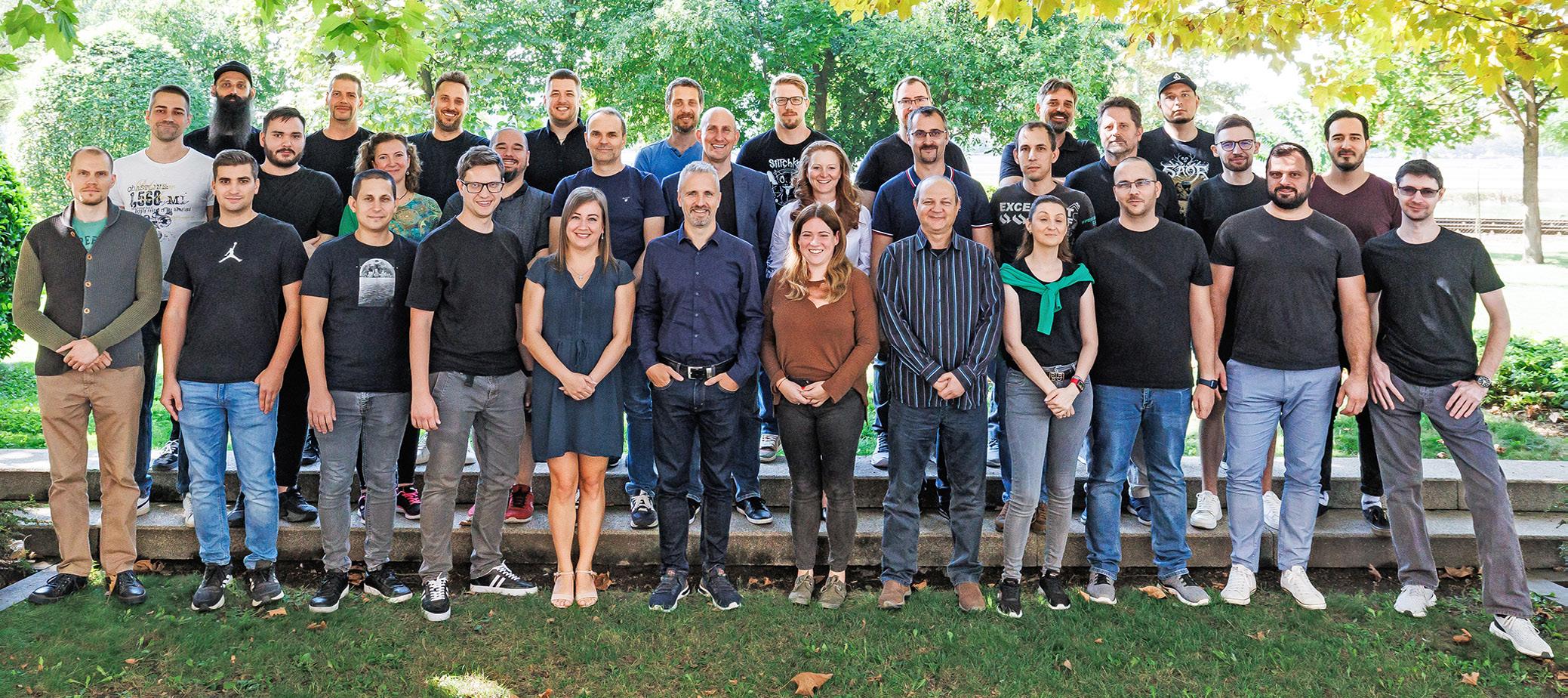
In a modern, if modest, office located near the Danube in Ferencváros, in Budapest’s District IX, a team of three dozen or so Hungarians has taken up one of the most significant technical challenges facing the globe today: the threat from new, so-called quantum computers enabling IT hackers to break encryption codes that protect computer data from health records to bank accounts to national security systems.
By Kester Eddy
It is a threat that some have dubbed “Encryptogeddon,” referring to the chaotic end of the digital world as we know it.
The danger stems from the expected development of quantum computers (see “What is Quantum Computing?”), many, many times more powerful and faster
than anything currently available, giving nefarious operators, including rogue states, the potential to access messages and transactions protected by what today are the very best encryption systems.
As a report jointly prepared in 2022 by the professional services firm Deloitte and the World Economic Forum puts it: “The quantum threat is expected to have
a large and disruptive impact on the current digitally dependent economy.”
The report, otherwise written in a sober, unsensational style, states:
“Diverse global stakeholders, including governments, experts and larger communities of interest, have called for urgent action. In May 2022, U.S. President Biden announced
Who would have thought that Hungary is a tech powerhouse regarding prenatal care? Medicor is playing a crucial role in leading the charge of cutting-edge research and high-quality manufacturing. Its motto is as simple as it is telling: “Develop things that return investment tomorrow.”
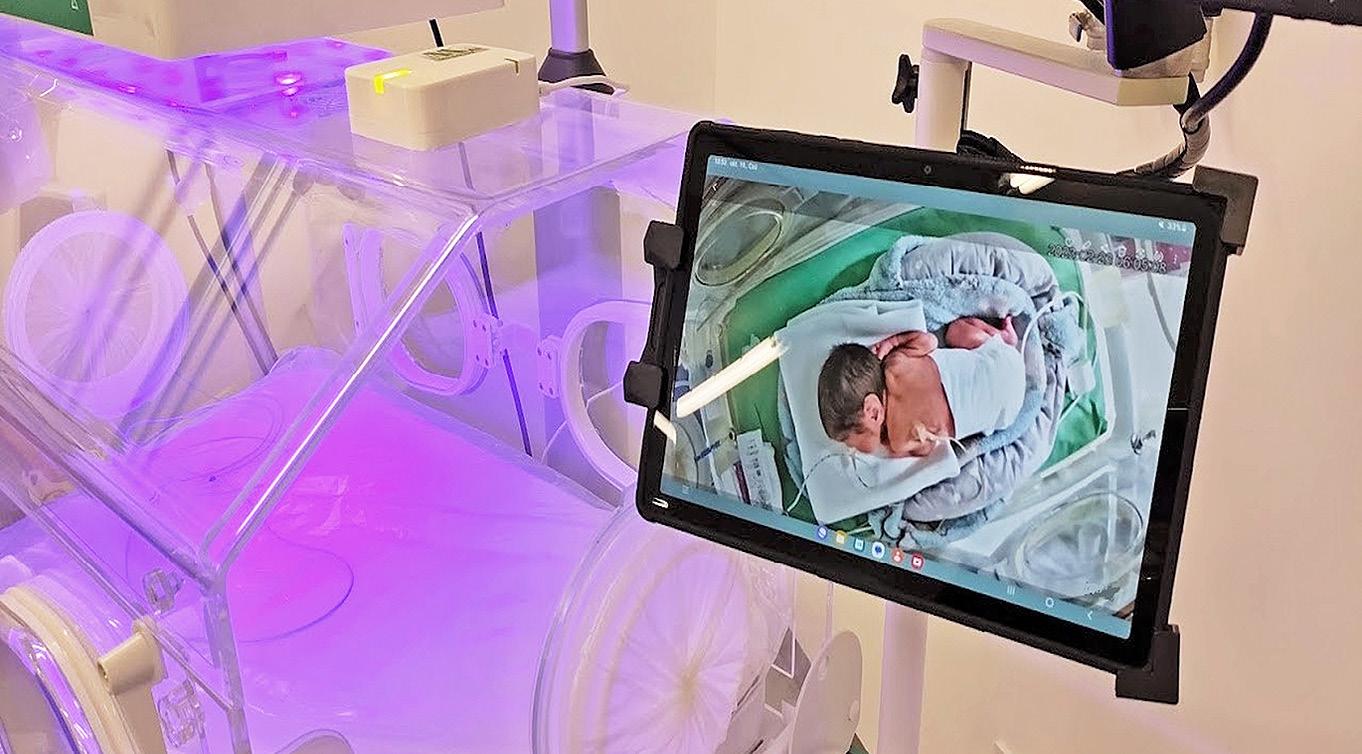
Neonatal transport incubators and remote data collection systems are part of the portfolio, as is blue light phototherapy
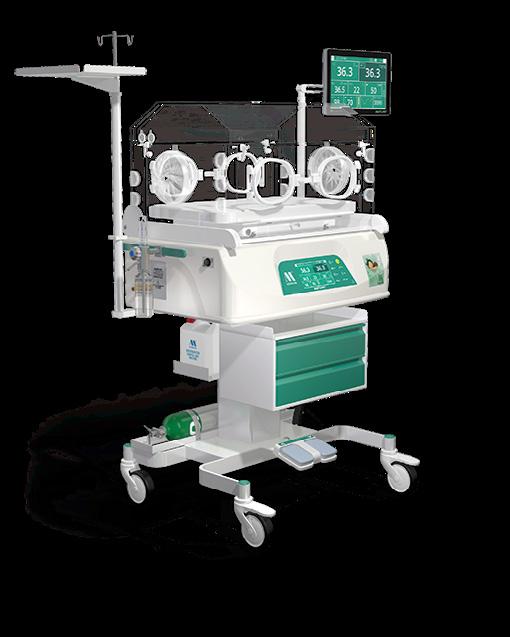

By Levent Hörömpöli-Tóth
The meeting room is not an ordinary one. Along the walls are all kinds of medical equipment on display. One has a sign that says it has been validated by NATO. Most of the material relates to prenatal care, but there are also mobile hospital beds with ventilators and monitors. The ad-hoc exhibit gives a pretty good idea of the scope of work of Medicor Zrt., whose newly built HQ serves as the backdrop for the interview.

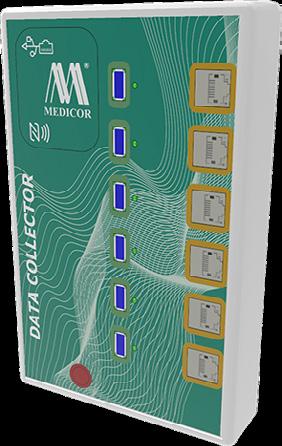


As CEO Arnold Steiner puts it, the firm deals with “everything that helps the healthy life path of newborns,” and, therefore, it manufactures and develops related devices and solutions. “We are not just a factory; we do assembly and a lot of research,” he explains.
The portfolio is impressive. Neonatal transport incubators and data collection systems are all part of the equation, and so is blue light phototherapy. The latter is provided by a so-called tunnel blue light technology that projects blue light from every direction onto the babies to prevent them suffering from infant jaundice. Warming and resuscitation tables are also made here. These come in handy if children need to undergo surgery right after birth and they can’t be placed into a closed incubator. They are kept warm and given blue light therapy during that time on those tables.

Hungarian companies are showing increasing signs of interest in getting involved with space tech projects. Some pioneers, such as PCB Design Kft., have already left the launch pad.
By Levente Hörömpöli-Tóth
“Yeah, sure, let me call you back in a few minutes.” János Lazányi agreed to an interview with the Budapest Business Journal right away. The head of PCB Design Kft. was busy as always: on this occasion, he and his team were attending Industry Space Days, a flagship event of the European Space Agency (ESA) in the Dutch town of Noordwijk. I got hold of him while they were dismantling their booth. As promised, he called me back almost immediately. “OK, the boys are having a prosecco, but I’m here for you.”
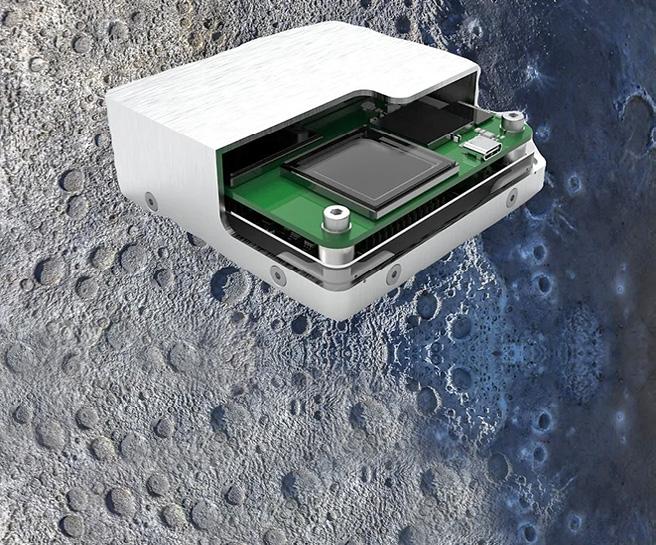
The exhibit takes place every two years, and the company participated in the previous edition but as
a visitor rather than an exhibitor. It was more about getting a taste of the whole thing back then, with five meetings in total. This year, they had up to 26 B2B encounters in two days.
Interest from Hungarian businesses in general is also on the rise. For the 2024 iteration of the expo, 15 corporations from Hungary popped by, although only two were exhibiting: PCB Design and Hunspace, the Hungarian Space Industry Cluster. The Space Days gathering was held in a gigantic inflatable tent, a sign that, for all the evident growth, it is still primarily for dedicated pioneers rather than the mass market.
On the other hand, more stakeholders are seeing potential opportunities. As Lazányi explains, pretty much all the fields of science are covered.
“Whether a geologist, a chemist or a behavioral scientist, they all can be engaged given space activities have so many different aspects that require diverse expertise,” he notes. (See boxes for the Hungarian stakeholders and the space race.)
The green transition is turning automotive upside down, undermining predictability.
Diversification is, therefore, inevitable. Technoplast is one Hungarian firm that has learned how to prevail in a rapidly changing landscape.


By Levente Hörömpöli-Tóth
It is rare to find family businesses in Hungary with more than 40 years of continuous operation, given the Iron Curtain fell only 35 years ago. Technoplast Group is one of the few that can take pride in having such a long tradition. Its roots go back well before the dawn of the market economy. In fact, its predecessor was among the first privately owned entities in the country at the time of its establishment in 1980.
Fast forward to today, and we are talking about a robust company with a solid track record, including Tier 1 supplier references for manufacturing behemoths such as Audi Hungaria, Bosch Magyarország, Teva, and Electrolux. The portfolio has also broadened along the way. After all, plastic injection molding tools are in great demand in many walks of life. The company’s products are sought after in fields such as machinery, automotive, medical equipment, aviation and even the space industry.
Such a diversified corporate profile would typically be suitable to guard against market turbulence. But the crises of the recent past, from the pandemic to raging inflation, left hardly anyone unscathed. Technoplast had to deal with the consequences too, and it was the transition in automotive that had one of the most significant impacts on its activities.
As chief executive Gábor Zai explains to the Budapest Business Journal , back in 2019, something fundament changed: trust in the future was broken. Up until then, people all over Europe lived their lives in the belief that they could spend their money freely because they felt their jobs were secure, and the value of their work was constantly increasing.